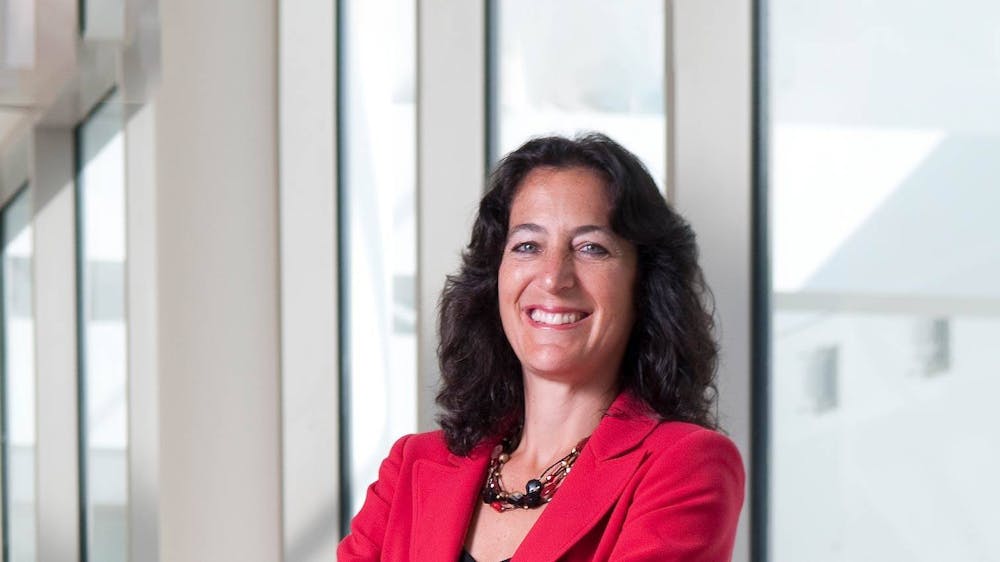Andrea Goldsmith, an accomplished entrepreneur and pioneer in the field of wireless communications, was appointed as new Dean of the School of Engineering and Applied Science (SEAS), the University announced on April 15.
She has been appointed effective Sept. 1, and she will also join the University faculty as the Arthur LeGrand Doty Professor of Electrical Engineering.
Former Dean of SEAS and the Michael Henry Strater University Professor of Electrical Engineering H. Vincent Poor GS ’77 led the search committee for the new dean. Poor is also serving as Interim Dean of SEAS until September.
Goldsmith will replace Emily A. Carter, the Gerhard R. Andlinger Professor in Energy and the Environment, Emeritus, who served as SEAS Dean until 2019 when she became Executive Vice Chancellor and Provost at the University of California, Los Angeles.
Goldsmith is currently the Stephen Harris Professor of Engineering and Professor of Electrical Engineering at Stanford University, where she has worked for 21 years. Her work began in the 1990s when she started developing mathematical approaches to improving Wi-Fi systems through increased efficiency and capacity. Her methods are used in cellphone networks to the present day, the University announcement noted.
Goldsmith said her entry into the position in the midst of the coronavirus pandemic makes information technology all the more sought after and the position she will fill even more crucial.
“This moment in time amplifies the importance of SEAS’s strengths and new initiatives in engineering as well as in the interdisciplinary fields of bioengineering and data science,” Goldsmith said. “The value of the information and communications technologies enabling our universities, companies, and the entire social ecosystem to function in a suddenly all-online world could not be more apparent.”
“Bioengineering and data science will also play a critical role in mitigating the current health crisis of COVID-19, speeding our recovery from it, and reducing the human and economic toll of future pandemics,” Goldsmith added.

She sees her work in SEAS as a unique opportunity to continue fostering technical advances in the service of humanity.
“The opportunity to lead Princeton SEAS at this pivotal time is very compelling,” she said, “given its plans to create new buildings and a new neighborhood for the engineering school, launch interdisciplinary initiatives in bioengineering, robotics, and data science, significantly grow the school while promoting a diverse and inclusive culture, and foster innovation and entrepreneurship within engineering and across Princeton, including an entirely new part of the campus dedicated to those efforts.”
“I am excited to realize this vision given its potential for positive impact not only on Princeton, but also on other universities, the engineering profession, and the hi-tech industry,” Goldsmith remarked.
Goldsmith was elected as a member of the National Academy of Engineering and as a member of the American Academy of Arts and Sciences in 2017. Additionally, she co-founded and has served as Chief Technical Officer and board member of PlumeWifi and Quantenna , and is currently a board member for Medtronic and Crown Castle Inc.

She has also written a book on her area of expertise entitled “Wireless Communications” and co-authored several others, and she has received various awards including some from the Institute of Electrical and Electronics Engineers — where she has also served as a board member — and the Silicon Valley/San Jose’s Business Journal’s Women of Influence Award.
While her background is in science and technology, Goldsmith said she looks forward to interacting with faculty and scholarship from other disciplines. She is excited to work at a liberal arts institution, saying that “both engineering and the liberal arts draw significant benefits from each other.”
“I see that partnership setting Princeton engineering apart from its peer engineering schools in its ability to create and harness technology that serves humanity,” she said.








